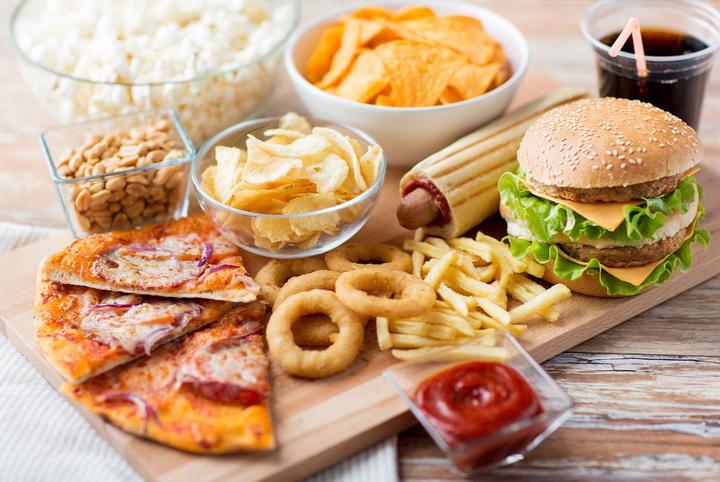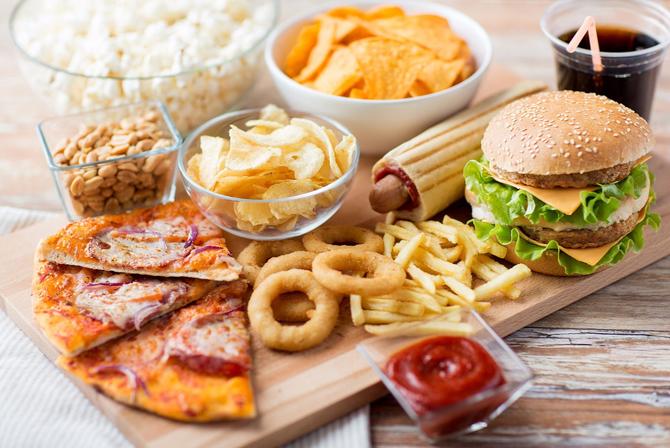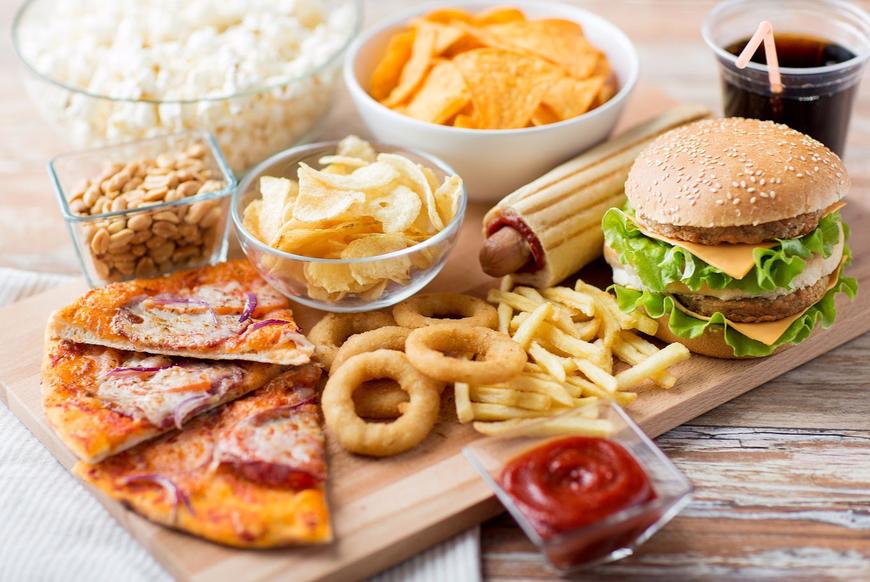



The fast food sector is booming all over the world, especially in the USA. The majority of the world’s population finds it difficult to imagine their everyday life without food on the go. Everyone will admit that along with the Internet, smartphones, and GPS systems, which simplify everyday activities, fast food has also become one of the key concepts that describe the 21st century. As any modern phenomenon, it has its causes, but not everyone is aware of how damaging the effects are.
Fast food restaurants remain to be on their growth because industrialization, which responded to the basic transformation in the world’s capitalist system, also transformed the world’s food system, affecting the nature in which food is sourced, produced, distributed and consumed (Mintz, 2006). Consequently, globalization, the main features of which are the rapid movement of goods, people, resources, ideas, and technology, has influenced the food and shaped the modern world food cultures. This made possible for citizens of almost all countries on each continent to know what are KFC, Burger King, McDonald's or Dunkin’ Donuts, Subway, Chicken Hut. This lead to homogenization, one of the bad effects of globalization of food on the go. Homogenization is reflected in the changes in the cuisines of other countries. Many Asian countries experienced the process of adaptations to American fast food, and McDonald's, for example, has become widely popular in Asia. Considering this, globalization has led to more complicated food cultures in the majority of countries. Moreover, it has triggered the marginalization of locally grown foods and the proliferation of unhealthy ones.
Tracing other reasons for the high demand for fast food restaurants, consumers are satisfied with takeout service that such shops can provide and a rather low price. In fact, fast food restaurants offer a full menu of different items, which are cheap and tasty at the same time. In addition, the system of rewards and discounts foster fast food stores popularity. Competition among customers is the main driver here. Such policies of the restaurants encourage people to come, again and again, get more points and, later on, exchange those for a free item of a favorite food. Zinta and Basevica in their study provide following statistic results of the research in 2011, the aim of which was to measure the popularity of fast food enterprises and the level of customers' satisfaction with these services. The survey involved 430 respondents and the majority of respondents (86%) admitted using fast food services. After summarizing the data, it was established four main reasons why people like fast food sector. 32.4% prefer junk food to the home-cooked meal because of eating fast. Next goes the possibility of taking food away - 19.2%, while 17.7% responded that it is always on their way. The last reason named was low prices - 14.4% (Zinta, Basevica, 2012, p.38).




Although fast food is said to be delicious, it has an addictive life effect and is dangerous. Being full of sugar, sodium, carbohydrates, salt, and saturated fat, which can’t be burned and stay in the body, fast food causes many diseases. The list is long, but the main illness is obesity that further leads to several other diseases, including stroke, diabetes, liver damage, and cardiovascular disorders. This kind of food tends to have higher levels of bad cholesterol than a good one, offering little in the way of nutrition. What is more, scientists say that not only can saturated fats negatively affect the heart, but also it has been established that high saturated fat consumption affects brain function and memory. Following this, fast food intake triggers cognitive function and productivity decline, stress. Children and teens are vulnerable the most; as a result, the expansion of multinational food companies leads to many concerns in the area of public health around the world. Due to the consumption of highly processed food, it has been claimed that frequent consumer’s lifespan could be a lot shorter. Paying attention to students and children as a target market segment, global increase in fast food consumption among students should be highlighted here. It was discovered, for instance, that 82% of UK students consumed fast food. Similar situation was among students is in Malaysia, and according to the survey, there 86 % of the students consumed fast food, 14% do not. In Pakistan, 70% of students consume fast food and the same percentage of students in Brazil eat fast food at least four or more times weekly. Among reasons, the price was found to be the crucial factor, considering the low financial status associated with students (Ukonu, 2016, p.2333). Affordability plays an important role while making purchasing decisions. This is followed by convenience; as technology has increased the expediency of fast food, and when consumers order food online, the delivery is almost immediate (Ukonu, 2016, p.2339).
Owing to branding and advertising campaigns, fast food is today’s trend and is in demand. In terms of popularity factors, speed, the possibility of taking food away, quality of taste, and availability are the most important and make the sale of products much more better (Zinta, Basevica, 2012, p.38). Chain fast food giants invest thousands of dollars in effective marketing strategies, which make visiting fast food stores trendy, and it is considered as a way of socializing. Eating with friends is a common thing, so it even helps to save time. There is no need to cook anymore, stay in line to buy products or wait when you order in the casual restaurant. The option of drive-thru service makes it possible to get tasty food without going out of your car. People are happy with that and fuel the demand of these chain stores, so today they are at the airport, mall, or railway station, and other public areas.
Attached file: The Demand for Food on the Go.docx
Click download to get access to a full version of the paper




Going out for eating outside brings about family tradition loss. Not having meals together with family leads to serious impacts on the family and society in general. The modern generation is quite competitive and in order to hold a solid position inside the community, youth tends to socialize more, be engaged in different activities; as a result, most have a busy schedule. As university life nowadays has a busy nature, students have no time to make their own food and consume fast food because of its convenience. Due to this, there is less time for time with family members, even people value family meals. Tied up schedules make it hard to put family meeting around the table into practice. Professor Fieldhouse points out that “by sharing meal-related tasks, from shopping to food preparation, table-laying and clearing-up, all family members can participate in this exercise of responsible family solidarity” (Fieldhouse, 2015, p.8). Unfortunately, the reality is the opposite and, consequently, family relations are damaged.
The more food stores there are, the more workplace this sector can provide. For instance, in the USA the restaurant industry is the main private employer, but it pays some of the lowest wages. Since most of the stuff will be unskilled, workers are usually low paid; as a result, there is no room for advancement in the economy. Million people are employed in the fast food industry. This stems from the industrialization of the restaurant. The system in such companies is that vast majority lack full-time employment, receive no benefits and, learning just a few skills, quit after a few months, while a handful of workers are busy with managing the corporate ladder in the company. Therefore, people don’t earn enough in order to live without getting help from the government. A good example of damaging economic impacts is medical insurance provided by the government for families not able to afford the proper insurance needed. Not eating out, staying safe and sound, and reducing health-related problems can help families budget their money better and save funds of the government.
Another economic result of the quick service food popularity one might name is an increase in mass production. First of all, American scientists from the Institute of Medicine, in Washington, emphasize the growth of people involved directly in agricultural food production (e.g., farmers) and higher employment among people involved in the rest of the food system (e.g., processing, manufacturing, food service, and retailing). Farmers are the core stone of the production sector, and for successful modern commercial farming, they need a wide range of materials and services from the agricultural input sector. “These inputs include seeds, chemicals, equipment, animal health services, animal breeding/genetics, financing, and information needed for modern commercial farming” (IOM, 2015). Consequently, shifts in market power and the distribution of economic returns among food chain sectors take place owing to the concentration of food and agricultural input firms.




Great economic influence has been observed in the countries, where meat consumption was rather low, and that is why the geography of meat-eating is changing. According to The Economist, there was a drastic difference in meat intake of the average Chinese person since 1961 (The Economist, 2019). In 2013 the average amount of consumed meat is 62kg, while the initial figure was 4kg. From a global perspective, nowadays half of the world’s pork is eaten in China (The Economist, 2019). This sounds good, but on the other hand, to feed livestock, almost four-fifths of all agricultural land is used for the cultivation of a variety of plans (The Economist, 2019). Especially harmful effects have demand for beef. Scientists consider meat production to be one of the most important ways in which humanity affects the environment. Beef has a considerably high carbon footprint due to the methane emissions from enteric fermentation in ruminants. In other words, meat consumption is partly responsible for greenhouse gas emissions. By cutting down forests, for example, people create pasture as well as arable land to meet the demand for animal feed.
For Africans, without doubts, new eating habits result in a longer and healthier lifespan, especially this is true for African children, who tend to suffer from avitaminosis and iron deficiency. Since meat is a good resource of useful minerals, these health problems can be solved (The Economist, 2019). Fast food industry gives a chance for locals to improve their well-being by strengthening the national economy of Africa as it might give more opportunities for local business. In fact, the article claims that in 2050 the amount of ruminant livestock animals will expand, however, the same way it will worsen the environmental situation (The Economist, 2019).
Farrimond states that in ten years time the developing “field of ‘personalized nutrition’ will offer healthy eating tailored to the individual”(Farrimond, 2018). Although it gives hope for a better and healthier future, the society of the 21st century pays aver the odds by putting physical and mental well-being on the line. Future definitely holds many news things; numerous reasons today shape our world tomorrow.